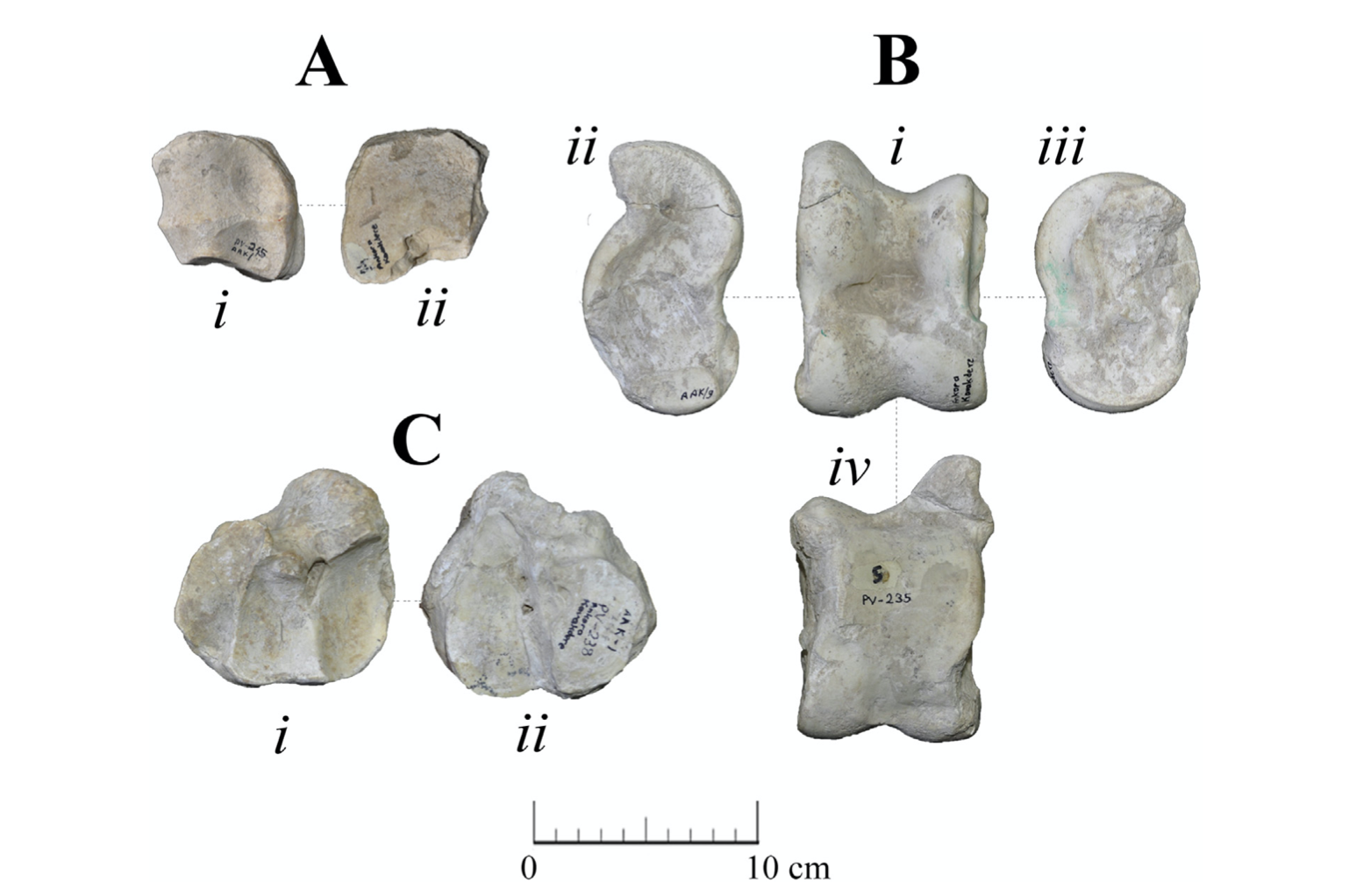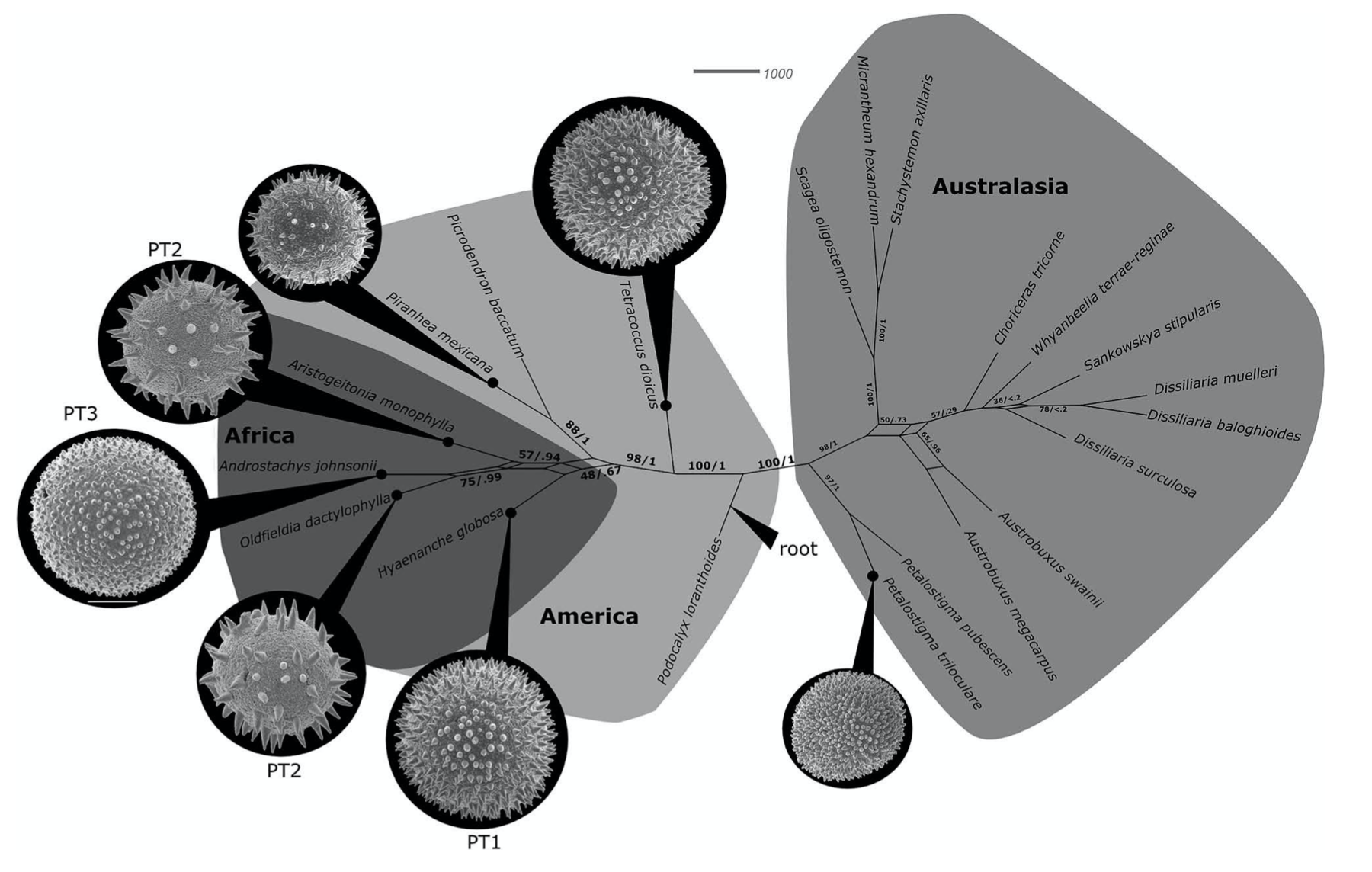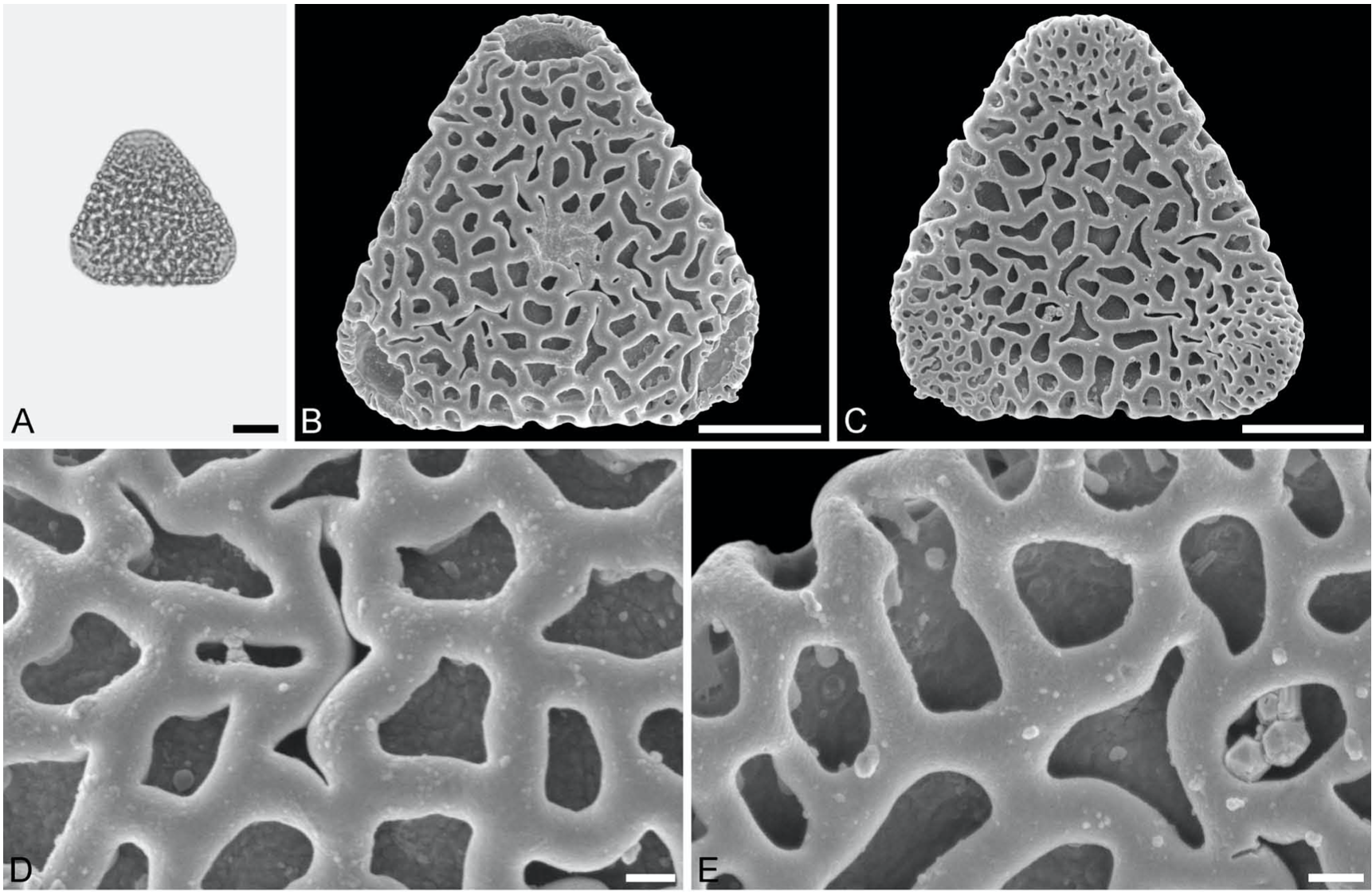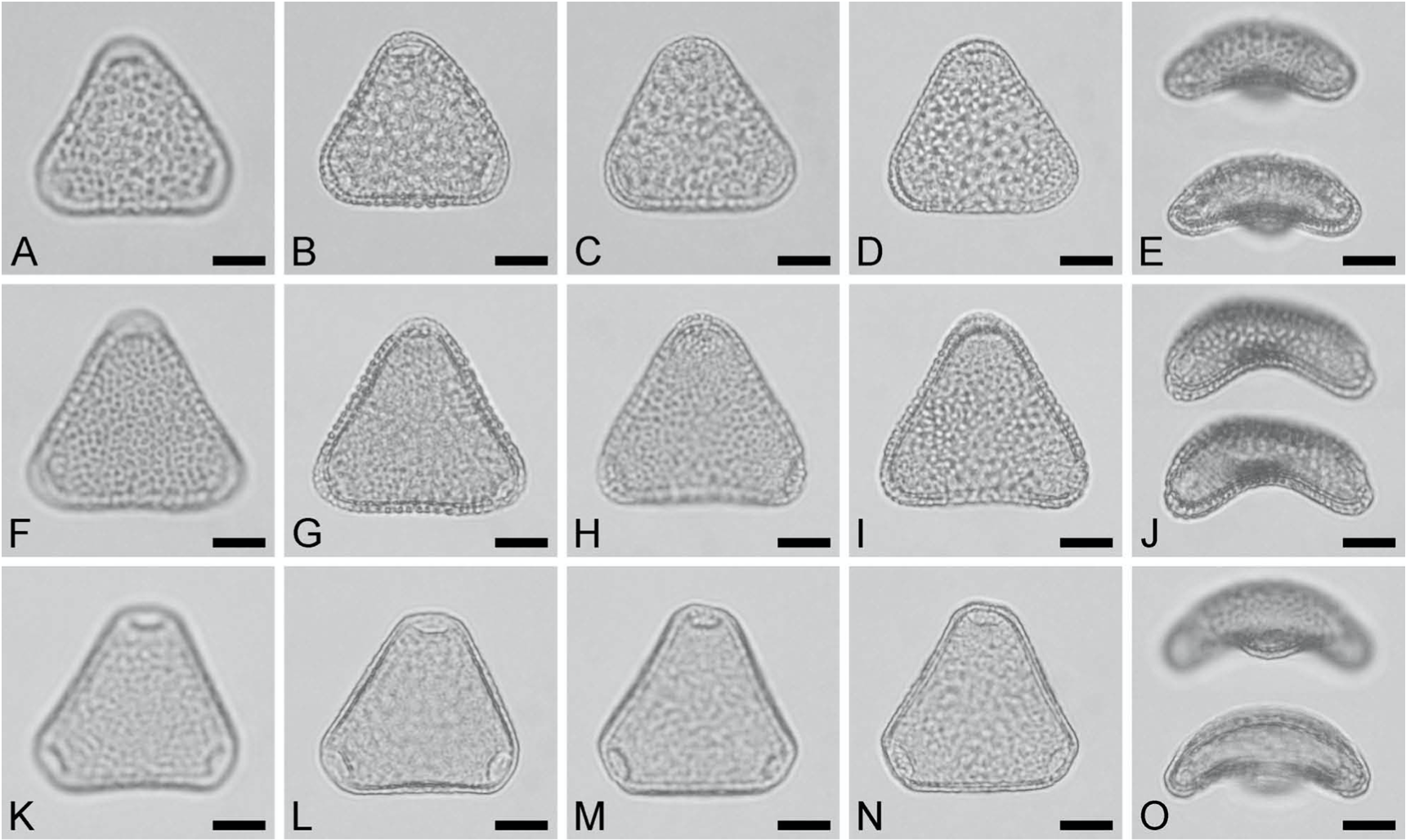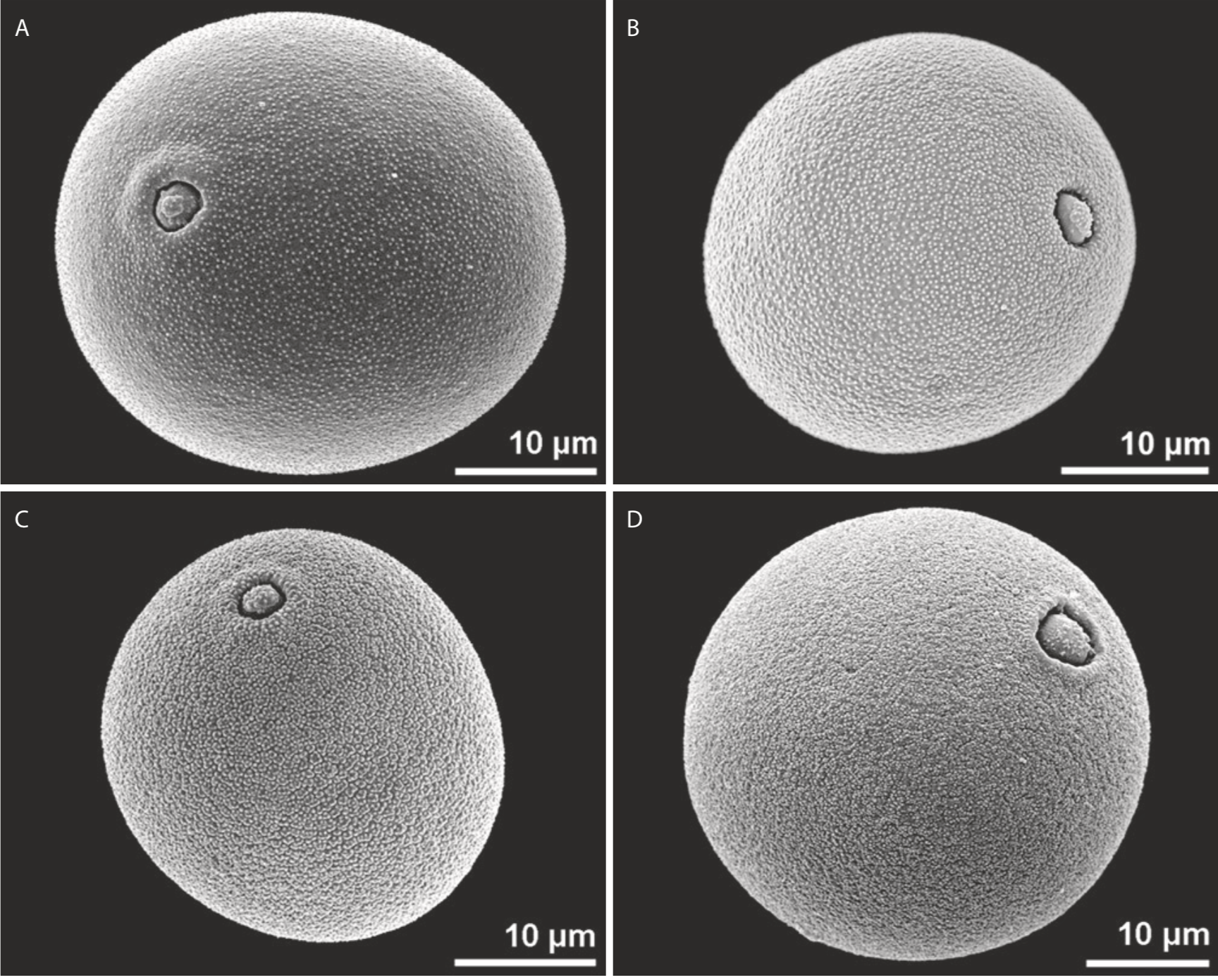Authors: Friðgeir Grímsson, Barbara Meller, Johannes M. Bouchal, Reinhard Zetter.
Previous studies on the palynoflora from the Lavanttal Basin show that it contains a rich assemblage of spores and gymnosperm pollen. Present and ongoing investigations of dispersed angiosperm pollen suggest a high diversity within this group, and due to the excellent preservation of the material, some rare pollen types are recognised. The Magnoliales to Fabales pollen record documented here contains 30 different taxa. Only a few pollen types are assigned to Magnoliids (four taxa); these are rare in the pollen record. Similarly, the Commelinids comprise five taxa and are also rare. Most of the angiosperm pollen originates from Eudicots (21 taxa). Of the angiosperm taxa documented here, Magnolia, Carex, Ranunculaceae, Platanus, Trochodendron, Buxus, Cercidiphyllum, Daphniphyllum, Distylium, Fortunearia, Parrotia, Parthenocissus, Vitis, Euphorbia, Salix and Papilionoideae are recorded for the first time from the Lavanttal Basin. This also includes the first fossil pollen record of Trochodendron worldwide and the first reliable pollen record of Daphniphyllum. Several of the taxa described here had a wide Northern Hemispheric distribution from the Eocene until the end of the Miocene. Also, key relatives of the fossil taxa are presently confined to humid warm-temperate environments, suggesting a very mild climate during the middle Miocene (Sarmatian) of the Lavanttal area. Some of the taxa encountered also support previous observations that the sediments of the Lavanttal Basin accumulated in a lowland wetland environment. This is based on pollen from aquatic taxa thriving in lakes, streams and swamps, and pollen from terrestrial plant taxa occupying margins of lakes and streams, backswamps, floodplains, river plains and hummocks. Other angiosperm pollen clearly originates from plants thriving on drier substrates, reflecting various vegetation units of the mixed evergreen/deciduous broad-leaved/conifer forests surrounding the wetland basin.
